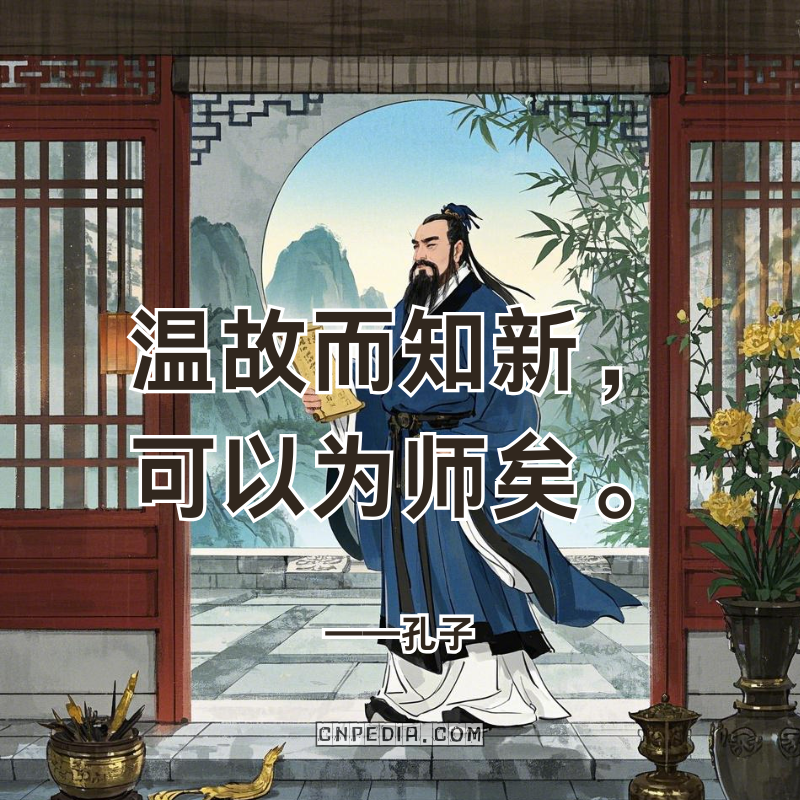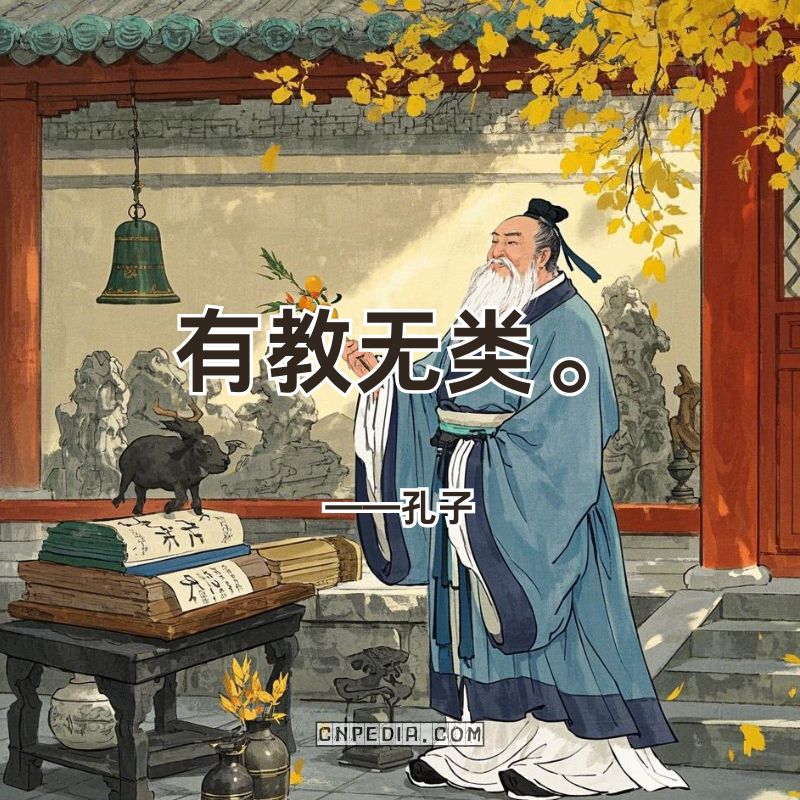Culture Page 32

君子欲讷于言而敏于行。——孔子(jūn zǐ yù nè yú yán ér mǐn yú xíng — Kǒngzǐ) Translation: “The noble stammers in speech but sprints in action.” Explanation: Confucius’ pragmatic maxim “君子欲讷于言而敏于行(jūn zǐ yù nè yú yán ér mǐn yú xíng)” (The noble stammers in speech but sprints in action) establishes anti-rhetorical leadership ethics. The character 讷(nè)—featuring the 讠(yán, speech radical—visually restrains verbal expression, while 敏(mǐn) with 辶(chuò, movement radical) prioritizes kinetic execution. This dichotomy shaped the 法家(fǎ jiā) (Legalist School)’s governance model, where officials were evaluated on irrigation projects built (行(xíng)) rather than policy speeches delivered (言(yán)). Historical embodiments revolutionized statecraft. Tang Dynasty’s 考功令(kǎo gōng lìng) (Merit Evaluation Decree) required magistrates to plant 1,000 trees before submitting governance reports—an ancient “show, don’t tell” policy....

不患人之不己知,患不知人也。——孔子(bú huàn rén zhī bù jǐ zhī, huàn bù zhī rén yě — Kǒngzǐ) Translation: “Fear not others not knowing you—fear you not knowing others.” Explanation: Confucius’ axiom “不患人之不己知(bú huàn rén zhī bù jǐ zhī), 患不知人也(huàn bù zhī rén yě)” (Fear not others not knowing you—fear you not knowing others) establishes epistemic humility as the cornerstone of social cognition. The character 患(huàn)—combining 心(xīn, heart) and 串(chuàn, string)—visually represents a heart suspended in proactive concern, urging continuous effort to understand others rather than seeking validation. This principle shaped the 察举制(chá jǔ zhì) (Han Dynasty talent selection system), where officials were evaluated on their ability to discern others’ true capabilities, not self-promotion. Historical applications transformed governance. Ming Dynasty envoys underwent 知人训练(zhī rén...

父母在,不远游,游必有方。——孔子(fù mǔ zài, bù yuǎn yóu, yóu bì yǒu fāng — Kǒngzǐ) Translation: “When parents live, journey not far; if journeying, have clear direction.” Explanation: Confucius’ ethical-geospatial principle “父母在,不远游(fù mǔ zài, bù yuǎn yóu), 游必有方(yóu bì yǒu fāng)” (When parents live, journey not far; if journeying, have clear direction) establishes filial responsibility as a spatial practice. The character 游(yóu)—depicting 斿(yóu, a child beneath a ceremonial flag)—symbolizes accountable mobility where movement is tethered to familial duty. This framework shaped 丁忧制度(dīng yōu zhì dù) (Mourning Leave System) in Han Dynasty China, requiring officials to reside near parents’ graves for three years—a ritual balancing personal ambition and filial piety. Historical applications evolved into societal norms. Edo-period Japan’s 親孝行(oyakōkō) (parental devotion) laws mandated citizens...

德不孤,必有邻。——孔子(dé bù gū, bì yǒu lín — Kǒngzǐ) Translation: “Virtue never stands alone—it always attracts neighbors.” Explanation: Confucius’ sociological axiom “德不孤,必有邻(dé bù gū, bì yǒu lín)” (Virtue never stands alone—it always attracts neighbors) proposes humanity’s earliest theory of moral magnetism. The character 邻(lín)—combining 邑(yì, community) and 粦(lín, glowing fireflies—metaphorizes ethical influence as radiant social cohesion. This principle shaped the 周礼(zhōu lǐ) (Zhou Dynasty rituals) where virtuous lords attracted neighboring states through 德治(dé zhì) (moral governance) rather than military force. Historical applications demonstrate this “glowing” effect. Tang Dynasty records show villages adopting 义仓(yì cāng) (charity granaries) after observing neighboring communities’ prosperity from collective ethics—an early documented case of moral contagion. Modern network science quantifies this: MIT’s 2023 study revealed altruistic acts...

工欲善其事,必先利其器。——孔子(gōng yù shàn qí shì, bì xiān lì qí qì — Kǒngzǐ) Translation: “The artisan perfects the craft by first sharpening tools.” Explanation: Confucius’ axiom “工欲善其事,必先利其器(gōng yù shàn qí shì, bì xiān lì qí qì)” (The artisan perfects the craft by first sharpening tools) establishes humanity’s earliest process optimization philosophy. The character 工(gōng)—originally depicting a carpenter’s square—symbolizes precision preparation as the foundation of excellence. This principle shaped 《考工记》(kǎo gōng jì) (Artificers’ Records), China’s first engineering manual from the Warring States period, which mandated tool calibration rituals before constructing royal chariots. The Industrial Revolution revived this wisdom. Toyota’s 精益生产(jīng yì shēng chǎn) (Lean Production System) operationalized 利其器(lì qí qì) through “single-minute exchange of die” (SMED) protocols—reducing tool changeovers from hours to...

君子成人之美,不成人之恶。——孔子 (jūn zǐ chéng rén zhī měi, bù chéng rén zhī è — Kǒngzǐ) Translation: “Nobles cultivate others’ virtues, not their vices.” Explanation: Confucius’ ethical imperative “君子成人之美(jūn zǐ chéng rén zhī měi), 不成人之恶(bù chéng rén zhī è)” (Nobles cultivate others’ virtues, not their vices) establishes the earliest framework for prosocial leadership. The character 成(chéng)—featuring the 戈(gē) (spear) radical—symbolizes active cultivation through deliberate intervention, not passive observation. This principle shaped the 儒家经典(rú jiā jīng diǎn) (Confucian classics)’ mentorship protocols, where scholars were ethically bound to amplify peers’ 美(měi) (virtues) while strategically ignoring 恶(è) (vices) to avoid negative reinforcement. Historical applications revolutionized governance. Ming Dynasty’s 考成法(kǎo chéng fǎ) (Merit Cultivation System) mandated officials to document subordinates’ strengths monthly—an early 360-degree review focused...

道不同,不相为谋。——孔子(dào bù tóng, bù xiāng wéi móu — Kǒngzǐ) Translation: “Paths diverging, plans unmerging.” Explanation: Confucius’ strategic axiom “道不同,不相为谋(dào bù tóng, bù xiāng wéi móu)” (Paths diverging, plans unmerging) establishes an ancient framework for productive pluralism. The character 谋(móu)—composed of 言(yán, speech) and 某(mǒu, certain)—encodes the paradox of consensus-building: alignment requires articulating differences before discovering shared 道(dào) (guiding principles). This wisdom shaped the 战国纵横家(zhàn guó zòng héng jiā) (Warring States strategists) who brokered temporary alliances between rival kingdoms through transparent divergence mapping. Modern applications abound. EU coalition governments operationalize 不相为谋(bù xiāng wéi móu) by codifying policy red lines before negotiations. Silicon Valley cross-cultural teams use “cultural due diligence” protocols where engineers from 40+ nations articulate non-negotiable 道(dào) (values) before project...

君子喻于义,小人喻于利。——孔子(jūn zǐ yù yú yì, xiǎo rén yù yú lì — Kǒngzǐ) Translation: “Nobles awaken to righteousness; plebeians awaken to profit.” Explanation: Confucius’ maxim “君子喻于义(jūn zǐ yù yú yì), 小人喻于利(xiǎo rén yù yú lì)” (Nobles awaken to righteousness; plebeians awaken to profit) establishes humanity’s earliest cognitive hierarchy theory of ethics. The character 喻(yù)—combining 口(kǒu, speech) and 俞(yú, digest)—metaphorizes moral internalization as a process of verbal instruction transformed into visceral conviction. This framework shaped the 士大夫(shì dà fū) (scholar-official) class’s governance philosophy, where policy decisions prioritized collective 义(yì) (justice) over individual gain. Historical applications abound. Edo-period Japan’s 企業士(kigyōshi) (samurai-merchants) blended Confucian 义(yì) with commerce, refusing profitable opium trade on ethical grounds. Modern parallels emerge in ESG investing’s tripartite framework—environmental 义(yì) superseding...

温故而知新,可以为师矣。——孔子(wēn gù ér zhī xīn, kě yǐ wéi shī yǐ — Kǒngzǐ) Translation: “Revisit the past to discern the new—then qualify as a master.” Explanation: Confucius’ axiom “温故而知新(wēn gù ér zhī xīn), 可以为师矣(kě yǐ wéi shī yǐ)” (Revisit the past to discern the new—then qualify as a master) establishes cyclical epistemology as a cognitive framework. The character 温(wēn)—featuring the 日(rì) (sun) radical—symbolizes knowledge maturation through temporal cycles, akin to solar rhythms governing agrarian societies. This 迭代(dié dài) (iterative) process became foundational to Song Dynasty scholars’ “考据学(kǎo jù xué)” (evidentiary research), where historical texts were continuously reinterpreted to address contemporary crises. Modern tech industries mirror this wisdom. Agile development’s sprint-retrospective cycles embody 温故(wēn gù) (past review), while machine learning’s train-validate loops...

有教无类。——孔子(yǒu jiào wú lèi — Kǒngzǐ) Translation: “Education transcends social strata.” Explanation: Confucius’ revolutionary axiom “有教无类(yǒu jiào wú lèi)” (Education transcends social strata) dismantled 5th-century BCE China’s caste-based learning monopoly. The character 教(jiào)—etymologically combining 攵(pū, a disciplinary rod) and 子(zǐ, child)—visually redefined teaching as guidance accessible to all, not just aristocratic privilege. This radical pedagogy laid groundwork for China’s 科举制度(kē jǔ zhì dù) (imperial exam system) that democratized bureaucracy through meritocratic testing, predating Western public education by 1,300 years. The philosophy’s modern rebirth began with 19th-century missionary schools educating marginalized groups, evolving into movements like 希望工程(Xī Wàng Gōng Chéng) (Project Hope) building rural schools. UNESCO’s 2023 report credits “有教无类(yǒu jiào wú lèi)” as ideological bedrock for UN SDG4 on inclusive...








